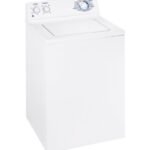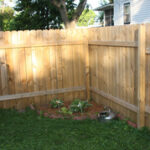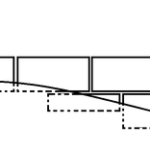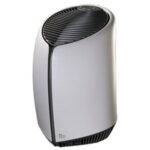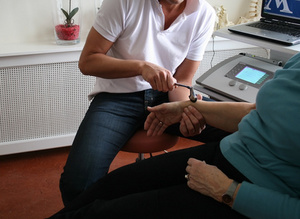All it takes is a quick Internet search to find that the number of brands and types of air purifiers on the market makes shopping a daunting task. The second thing you’ll notice is the price; air purifiers are expensive. Those on the fence may ask, “Are they really worth it?” A fair question, but consider this: an air purifier is a major appliance, more like a washing machine or refrigerator than a lamp or a fan, so you should expect its life cycle to last for up to two decades. Cheaper models are not going to have the longevity, nor will they have the cleaning capability of higher end models.
With that in mind, there are a number of questions to ask yourself so the model you do invest in serves its intended purpose best suited to your needs over the next 20 years.
Types Of Air Purifiers
All purification systems work by air filtration, some with a physical filter and some using electrostatic plates to capture particulates. Each has its own set of advantages and disadvantages. Filters need to be replaced periodically, and can add to the overall cost of the system. Additionally, heavier cleaning needs will require more frequent filter replacement. Filter air purifiers are usually less expensive than electrostatic models, but consider filter costs over the expected life cycle of the purifier.
Electrostatic models have no filter to replace, but the metal plates do need cleaning periodically, a few hours soaking in hot soapy water should do the trick (I spray Simple Green on mine and let it soak in hot water). Another drawback with electrostatic plates is when they get dirty, they begin to arc, much as an electric bug zapper does when a large insect gets caught in it. This is not dangerous, but simply means the plates need cleaning, and there is usually an indicator to alert the user long before arcing occurs. Both types of purifier are equally capable of cleaning a wide variety allergens and particulate matter.
Filters
A pre-filtering screen captures large dust particles, animal hair, and any larger matter before going through other filtration components. Think of air passing through the system as being cleaned in steps, eliminating first dust and hair, then smaller allergens, and finally, odorous gasses.
HEPA filters (High Efficiency Particulate Air) are designed for allergenic cleaning in vacuum cleaners and air purifiers. They are capable of capturing particles as small as 0.3 microns across, ideal for pollen, pet dander, and dust mites.
Carbon filters eliminate odors from tobacco smoke, chemicals, and pets. Activated carbon is porous, trapping gases that cause odor. Carbon filters leave air fresh and clean as it passes through the purifier and is reintroduced into the environment. Carbon filters need to be replaced, but not as often as HEPA filters.
Your Specific Needs
To help narrow down your choices, consider your reason for cleaning the air. Does someone in the household have asthma? Allergies? Are you trying to eliminate pet dander? Are there smokers? Or do you just want a fresh, odor-free environment?
For allergies and pet dander, the very least you need is a filtration system with a pre-filtering screen. For odors including tobacco, pets, and chemicals, such as cleaning solvents, glues, paints, and other workshop smells, you’ll want a filtration system with a carbon filter. And for a clean fresh scent, you’ll want a model that emits negative ions.
Assess the size of the living space you want to purify. Keep in mind that purifiers will not work through walls. Separate rooms will each need their own unit. However, in large open spaces, the living room, family room, and other adjoining areas where there are less confining walls, a larger unit would be perfect. The confines of your particular home will dictate your needs. Check that your intended purifier has the ability to clean the necessary square footage.
There has been controversy about the safety of air purifiers that emit negative ions and those that emit ozone, so let’s clear that up here. A negative ion is an oxygen molecule with an extra electron while an ozone molecule consists of three oxygen atoms. Negative ions float in the air and produce a fresh scent. Because they are electro-statically charged, they attract dust particles until they become too heavy to float, and then settle on surfaces where they are easily dusted up or vacuumed. Negative ions are completely safe.
Ozone produces a fresh scent that is much stronger than negative ions, and is excellent for eliminating tough odors. Industrial ozone purification is used where there has been heavy smoke damage from fire, damage from water and mildew, and in the aftermath of crime scenes to eliminate the odor of organic decay. From ozone emitting devices made for the home, where pollutant levels are much lower than industrial settings, ozone lingers and gradually breaks down. The concern people have with ozone is that buildup from these home devices might be harmful if allowed to accumulate to significant levels. Also, some people are sensitive to ozone, which can cause headaches and other asthma-like symptoms. Many states now have strict regulations controlling ozone emissions from home purification systems. Ozone-emitting purifiers for the home have become a casualty of the ozone controversy, and have since fallen out of favor with the consumer.
Budget & Brand Names
By now you should have a list of home pollutants you want to control, and you may even have a good idea whether you want a filter system or electrostatic plates. The next consideration is to begin looking at purifiers that address your specific needs. Brand consideration should be your last concern. Before that, narrow your choices to several models within a price range you can live with. Next, assess the cost of the model versus filter costs over the next 15 to 20 years. Then finally, read reviews for specific models.
Using this method, I decided on a model that I’ve had for four years now, and am still as happy with my decision now as I was then. I went with a model that had the features I needed for my personal workspace-electrostatic plates to eliminate filter costs, a carbon filter, negative ion emitter, a silent mode, multiple fan speed, and all at a reasonable price for a long-term appliance-and this brand had great reviews and a sterling reputation for high quality vacuum cleaners and air purifiers. Every month I clean those electrostatic plates, and I’m amazed at the amount of filth washed away-filth that I might have been breathing. Finding an air purifier that fits the needs of you and your family will give you satisfaction and piece of mind for years to come.
